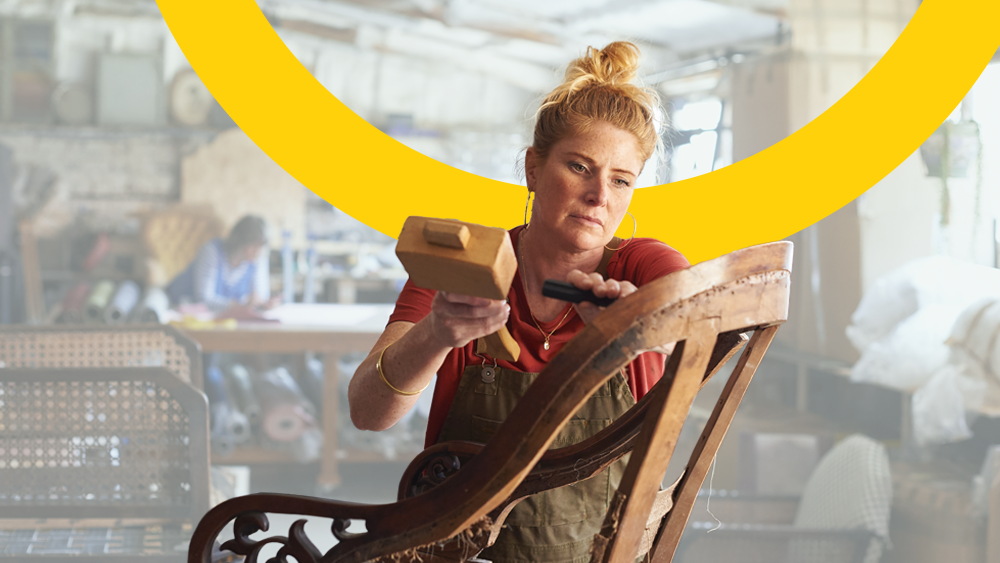We’re rolling it out in phases
Here’s when you need to start using recognised software to keep records if you work for yourself as a sole trader or make money from property. That way, you can get ready for Making Tax Digital in time.
6 April 2026 if your turnover is above £50,000
6 April 2027 if your turnover is above £30,000
6 April 2028 if your turnover is above £20,000
HMRC will work out your start date
We’ll only look at your total turnover from self-employment and property, put together, on your latest tax return.
Got other types of income? We won’t include those. And they do not count towards the amounts shown above.
What if my turnover hits any of the above amounts?
HMRC will get in touch to let you know that you must get ready for Making Tax Digital and sign up to use it.
We won’t sign you up automatically, so it’s important to do this in time.
In your first year using the new service, you’ll still need to fill out a Self Assessment tax return for the previous tax year the usual way
That’s because you won’t have sent quarterly updates for the previous tax year.
You can sign in and submit your Self Assessment tax return through your HMRC online tax account. You’ll still need to do this by 31 January.
Think of this as a transition to the new way of doing things
By the following January, you’ll be able to do everything straight from your software. This will make the process simpler in the long run.
Can I sign up to use it sooner?
Sure. If you’d like to start using it sooner you can sign up voluntarily on GOV.UK – we’ll just ask you some questions to check you’re good to go.

I’ve only just started working for myself or renting out property – do I need to do this?
Not right away. First, you’ll do one Self Assessment tax return. Then HMRC will check your turnover. We’ll let you know when you need to sign up.
Get ready for Making Tax Digital today
So you’re all set to start using the new system in time. That way, you can steer clear of any penalties.
You’ve probably got some questions
Why is the way you do tax changing?
It’s part of the UK government’s goal to modernise the tax system and close the tax gap – the difference between what tax should be paid and what people actually pay.
What if I earn money from both working for myself and property?
Keep separate records for both. You’ll send separate quarterly updates for each type of income.
Then they’ll all pull through into one end-of-year tax return.
Making Tax Digital for Income Tax has been delayed before – will it actually happen?
The UK government has restated that it is committed to delivering Making Tax Digital for Income Tax from April 2026.
Do limited companies have to use this?
No. But you may already use Making Tax Digital for VAT if you’re VAT registered.
Do partnerships have to use this?
Not yet. Partnerships will need to use Making Tax Digital for Income Tax in the future. But for now, you’ll carry on doing a Self Assessment tax return. We’ll set out the timeline for when you need to start using the new service at a later date.
What if I’m a partner in a business?
If your total turnover from self-employment and property income goes above the qualifying thresholds, then you’ll need to use the new service. You’ll report your partner income through your compatible software before you submit your tax return.
Find out more on GOV.UK about how to use Making Tax Digital for Income Tax to submit your tax return
What if I miss a deadline?
We’re introducing points-based penalties to make things fairer. If you miss a submission deadline, you’ll get a penalty point. Get too many points and you’ll pay a fine.
The number of points depends on what updates you are expected to send to HMRC each year.
I already use software to submit my Self Assessment tax return – can I keep using this?
Maybe. You’ll need to check with your software provider to make sure it will work with Making Tax Digital.
If not, you’ll need to start using new software that does.
You can check if the software you use is included on our list of compatible software on GOV.UK
Can I get an exemption?
You can apply for an exemption if you think you’re digitally excluded. This means it is not reasonable for you to use compatible software to keep digital records or submit them.
There are different reasons why this might apply to your circumstances but this could be because:
- your age, disability, health condition or location stops you from using a computer, tablet or smartphone
- you’re a practising member of a religious society or order, whose beliefs are incompatible with using digital communications or keeping digital records
Find out if you can get an exemption from Making Tax Digital for Income Tax.
There are also other types of exemptions explained in Find out if and when you need to use Making Tax Digital for Income Tax.
Do the quarterly updates really matter – can’t I just sort everything out through the end-of-year tax return?
HMRC expects everyone to take reasonable care with their digital records. Your quarterly updates should therefore match the income and expenses for each period. You could get a penalty if you don’t keep adequate digital records.
What happens if I miss out some income and expenses from a quarterly update – do I need to resend that update?
No, don’t worry. You can add in the missed information on your next quarterly update.
Where can I build my digital skills to get ready?
The National Careers Service has a guide on free training that’s out there, including courses that cover digital record keeping.
There are lots of ways to improve your digital skills. Not all learning has to take place in a classroom – you can learn in your own pace and in your spare time.
What if software isn’t working the way it should?
Check with your software provider as soon as possible, as each software works slightly differently.
What about the Construction Industry Scheme (CIS)?
If you’re a contractor registered with the scheme, you’ll still need to send your CIS returns monthly to get deductions. You can use software that handles both CIS and Making Tax Digital. Ask software providers about this.
Are you a subcontractor? When the new system kicks in, you’ll just include any CIS deductions in your quarterly updates. Some software will even do CIS deductions automatically for you – ask software providers about this.
Find out more about the Construction Industry Scheme on GOV.UK
I think my total turnover will be between £30,000 and £50,000 – is there a timeline to help me get ready?
| 31 January 2027 | Deadline to submit a Self Assessment tax return for 2025 to 2026 |
| 6 April 2027 | When you must start keeping records using Making Tax Digital software |
| 7 August 2027 | Deadline to send HMRC your first quarterly update |
| 7 November 2027 | Deadline to send your second quarterly update |
| 31 January 2028 | Deadline to submit your Self Assessment tax return for 2026 to 2027 |
| 7 February 2028 | Deadline to send your third quarterly update |
| 7 May 2028 | Deadline to send your fourth quarterly update |
| 7 August 2028 | Deadline to send your first quarterly update of the 2028 to 2029 tax year |
| 7 November 2028 | Deadline to send your second quarterly update |
| 31 January 2029 | Deadline to submit your end-of-year tax return straight from Making Tax Digital software for 2027 to 2028 |
| 7 February 2029 | Deadline to send your third quarterly update |
| 7 May 2029 | Deadline to send your fourth quarterly update |
Tell us what you think
We want to hear your views about the information on this page, and on GOV.UK, so we can improve the quality and relevance of the information we provide in future.
This survey will take around 5 minutes to complete. Responses are anonymous – you will not be asked to provide any personal information that will identify you.
